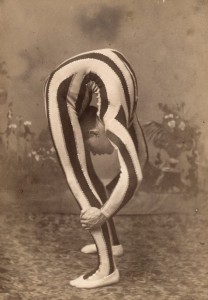 William Broad is at it again, writing in the New York Times today, warning about the dangers of yoga, so I feel that I must rant a little. Last year Broad wrote the infamous “How Yoga Can Wreck Your Body.” excerpt from his book, The Science of Yoga. I could be wrong but there is something disingenuous about periodically writing screeds of warning about an ancient practice that he himself credits at the beginning is “generally” good.
William Broad is at it again, writing in the New York Times today, warning about the dangers of yoga, so I feel that I must rant a little. Last year Broad wrote the infamous “How Yoga Can Wreck Your Body.” excerpt from his book, The Science of Yoga. I could be wrong but there is something disingenuous about periodically writing screeds of warning about an ancient practice that he himself credits at the beginning is “generally” good.
From my own practice and research, I know that yoga is generally a good thing. The bending, stretching and deep breathing can renew, calm, heal, strengthen, lift moods, lower the risk of heart disease, increase flexibility and balance, counter aging and improve sex. In short, the benefits are many and commonplace while the serious dangers tend to be few and comparatively rare.
He then goes on, with the help of another yoga voice, in this case the teacher Michelle Edwards (in last year’s article it was Glenn Black) to say why it is bad. To which I have to say blah, blah, blah…
Yoga is bad for anyone who does it incorrectly. Anything done incorrectly puts the body in danger of injury.
As I wrote last year in response to the article I mentioned at the top of the post, I am one of the people that William Broad is referring to when it comes to men who can easily get injured. My yoga life began with ashtanga, an amazing practice that no one taught me how to do correctly. As a result I hurt my knees due to too much hyperextension and ended up having three knee surgeries before coming to realize that I should probably learn to do this yoga stuff correctly. And now fifteen years later I have a practice that allows me to do anything I want without any fear of injury. Or if I get injured, I heal fairly quickly.
I recently had a back and forth with Michelle Edwards about a blog she wrote on The Huffington Post that mined similar territory. That post specifically was about straight legged forward bends and their danger. Personally I don’t think there is any danger in a straight legged forward bend done right.
In the Times article William Broad quotes a doctor about the number of hip surgeries he performs on yoga students and dancers. I’m not surprised by this as both yoga and dance mistakenly tell students to tuck their pelvis’ under which is what leads to the main physical malady that Broad discusses, something called F.A.I, Femoroacetabular Impingement.
I get where Williiam Broad is coming from in that he is out there to sell books and I am sure that each of his columns of this nature sell quite a few because they tend to get a lot of attention. He says a lot of the right things but his approach drives me batty. He is very happy to quote hip surgeons but doesn’t question whether all those surgeries they mention are truly needed. What if all those women who showed up with debilitating pain changed the way they practice? Maybe they could heal without need to be operated on which carries its own set of dangers. Surgery, even successful ones, can be traumatic, and carry their own risks.
The issue for me always comes back to one of the main themes of this blog—STOP TUCKING YOUR PELVIS. There is nothing wrong with having a gentler practice which is what Edwards says helped heal her hip injuries. But there is nothing wrong with having a more rigorous practice if you are aware and aligned.
I have to admit that I watch the other bodies that practice around me in yoga classes and I think most people tuck their pelvis way too much which can lead to some serious trouble. The essence of my yoga teaching and my walking program is to help people align the pelvis correctly.
We are designed to walk, run, play and do whatever with as much rigor as desired. If we do it correctly there is no reason why we have to break down, back off or stop.
Everything William Broad says in the article is basically correct but it is really an indictment of yoga teaching and I don’t think it is all that great to tell people that they have to back off, or be scared. It might be too easy to become a yoga teacher, and I do believe that most teachers don’t really know enough to teach people correctly. But that is the fault of the students who put their trust in those teachers.
It is the student’s responsibility to find the right teachers, do the practice correctly and take care of themselves. Listening to people who teach you poorly or people who tell you not to do something that you should feel free to do seems equally silly.
